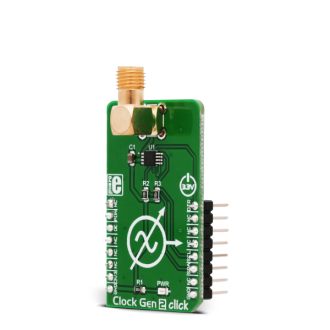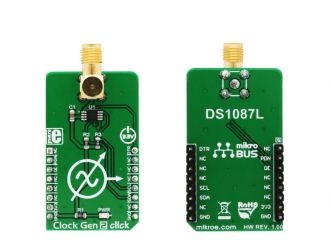
We strongly encourage users to use Package manager for sharing their code on Libstock website, because it boosts your efficiency and leaves the end user with no room for error. [more info]

Rating:
Author: MIKROE
Last Updated: 2018-07-04
Package Version: 1.0.0.0
mikroSDK Library: 1.0.0.0
Category: Clock generator
Downloaded: 6007 times
Not followed.
License: MIT license
Clock Gen 2 click is an accurate square wave generator that can generate a clock signal in the range from 260kHz to 66.6MHz.
Do you want to subscribe in order to receive notifications regarding "Clock Gen 2 click" changes.
Do you want to unsubscribe in order to stop receiving notifications regarding "Clock Gen 2 click" changes.
Do you want to report abuse regarding "Clock Gen 2 click".


Library Description
Library provides basic functions for setting different clock output frequencies.
Key functions :
void clockgen2_setPrescaler(uint8_t VAL); - Function for setting the clock prescaler.
void clockgen2_changeAddress(uint8_t _newAddr); - Function for changing the default address.
void clockgen2_outputEnable(uint8_t state); - Function for enabling the clock output.
Examples Description
The application is composed of three sections :
void applicationTask()
{
char i;
for( i = 5; i< 8; i++ )
{
clockgen2_setPrescaler(i);
clockgen2_outputEnable(1);
Delay_ms(2000);clockgen2_outputEnable(0);
Delay_ms(2000);
}
}
Other mikroE Libraries used in the example:
Additional notes and information
Depending on the development board you are using, you may need USB UART click, USB UART 2 click or RS232 click to connect to your PC, for development systems with no UART to USB interface available on the board. The terminal available in all MikroElektronika compilers, or any other terminal application of your choice, can be used to read the message.